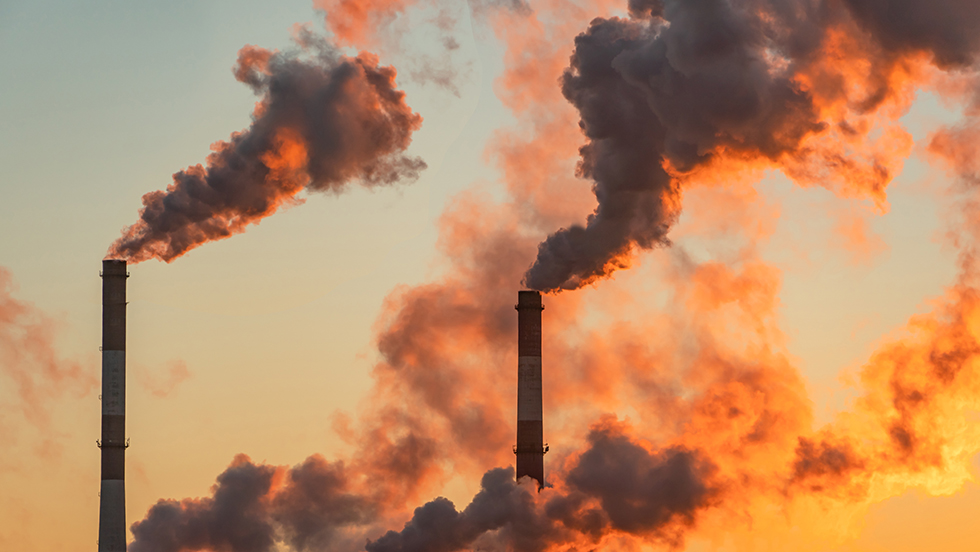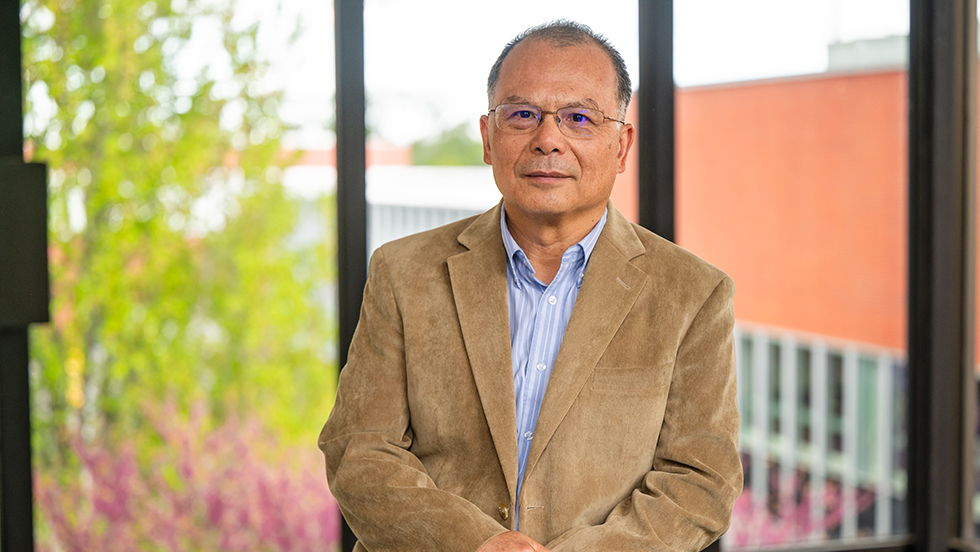
A new approach to cost-benefit analysis helps corporations reduce their carbon emissions.
Though it is clear that humanity must curtail its carbon emissions to mitigate the effects of climate change, there is no “one size fits all” solution. Every industry has different production methods, and most lack the tools to determine which emission reduction targets and policies would best meet their needs. While a cost-benefit analysis would help corporations neatly evaluate the efficacy of potential strategies, such an analysis has been challenging to develop and apply accurately—until now.

Zhimin Huang, PhD, is professor and chair of decision sciences and marketing. His many research interests include productivity benchmark analysis and multi-criteria decision-making.
Zhimin Huang, PhD, professor of decision sciences and marketing, and several colleagues have created an innovative approach to cost-benefit analysis that will empower industrial enterprises to reduce emissions at minimal expense. Their work, which was published as “Capturing the least costly measure of CO2 emission abatement: Evidence from the iron and steel industry in China” in the journal Energy Economics (February 2022), hinges on a new way of measuring the marginal abatement cost (MAC) of any proposed carbon reduction strategy.1 “MAC tells us what the entire economy needs to pay to decrease one additional unit of carbon dioxide emission,” Dr. Huang explained. In other words, given all the characteristics of a particular industry, what is the cheapest way to remove an additional unit of carbon?
Historically, researchers have estimated the MAC of a given policy by using a production-possibilities frontier. These frontiers are economic models, plotted as a curve on a graph, that show the trade-off between any two outputs an economy might produce considering the available resources. For instance, the more resources an economy devotes to iron, the less steel it will be able to make. If resources are scarce, the graph can generate an opportunity cost that indicates the optimal combination of those two outputs.
According to Dr. Huang, however, the contours of this curve have always been problematically imprecise. Researchers have had to deploy one of two different methods to estimate it. The first, parametric, which takes existing data about production to estimate a policy’s MAC, is only as good as its initial modeling—any bias present in the model will be present in the results. The second method, nonparametric, does not base its findings on a model susceptible to bias, but it does assume that any deviation results from inefficiency and therefore cannot accommodate normal statistical variation. The approach pioneered by Dr. Huang and his team, which they call the “stochastic nonparametric method,” corrects those shortcomings. “In combining the key advantages of the parametric and nonparametric methods, our method is able to produce results that are far more reasonable and accurate,” he said.
A Test Case Measuring Emissions Reduction Costs
The team decided to put their method to the test against Chinese iron and steel manufacturing—an industry chosen for its national importance and enormous carbon footprint. “About 80 percent of the industry’s energy consumption is coal-related,” Dr. Huang said. “It also accounts for about 17 percent of China’s energy consumption and about 13.5 percent of its annual total CO2 emissions.”
Dr. Huang and his colleagues examined the MAC of several different approaches to emissions reduction for Chinese iron and steel enterprises, including downscaling production activity and increasing inputs such as carbon abatement instruments and technologies. Though they found a substantial range in the average MAC for the industry (from 2.07 to 2,395 yuan per ton of manufactured steel), expanding the workforce proved to be the least-cost measure for most enterprises. “On average,” he said, “the cost of increasing the number of employees dedicated to energy conservation and emission reduction is lower for China’s steel industry than the costs of alternative approaches.”
Now Dr. Huang is looking to help other polluting enterprises reduce their emissions. “We plan to apply this new method to other industries with high carbon emissions to calculate their abatement cost and identify the least-cost measure for reducing CO2,” he said. “To halt anthropogenic climate change, it is essential to start controlling emissions at minimum cost and maximal efficiency.”